The South African rand has retreated this week as the US dollar index (DXY) surge continued. The USD/ZAR pair rose to a high of 19.11 on Wednesday and is hovering at its highest point since March 4th.
Fed, SARB, South African electionThree main factors will move the South African rand. First, it will react to the action by the South African Reserve Bank (SARB) when it meets in May. Economists expect that the central bank will maintain a moderately hawkish tone in that meeting since inflation remains high.
A report published on Wednesday showed that inflation retreated in March. According to the statistics agency, the headline CPI dropped from 5.6% in February to 5.3% in March. Core inflation retreated from 5.0% to 4.9%.
While inflation remains inside the bank’s target range, there is a possibility that it will leave rates at the current level and then slash later this year. For one, analysts believe that inflation will pick up steam in the second half of the year. In a statement, a Bloomberg analyst said:
“Inflation will remain sticky until year end, eluding the mid-point of the South African Reserve Bank’s 3-6% target — where the SARB would like to see inflation anchored — delaying rate cuts until 2025.”
The SARB interest rate meeting will happen at the end of May. Before that, the South African rand will react to the bank’s Monetary Policy Review scheduled for April 23rd.
Strong US dollarSecond, the USD/ZAR pair will react to the US dollar, which is in a strong rally amid inflation and geopolitical risks. US inflation remains above 3%, with the core CPI being almost double the Fed target of 2.0%.
There is a possibility that the ongoing crisis in the Middle East will lead to more inflation by lifting energy prices. Brent crude oil has already jumped above $90 and analysts expect that it will soar to over $100.
As such, analysts expect that the Fed will deliver fewer rate cuts than anticipated. Some of them see two cuts while others believe that it will not cut after all. For one, if it fails to cut in July, chances of any reduction before December will fade because of the election.
The Fed will be accused of attempting to boost Biden if it slashes rates shortly before the election. The next Fed’s meeting will happen on May 1st.
South African electionThe next important catalyst for the USD/ZAR pair will be next month’s South African election. South Africans will elect their members of parliament who will go ahead to elect the next president.
While Cyril Ramaphosa will likely be the president, he will face competition from Jacob Zuma and John Steenhuisen of the Democratic Alliance.
The election will likely have no major implication on the South African rand or the country’s stocks. However, historically, elections in most emerging market economies tend to lead to capital flight and a weaker currency.
USD/ZAR technical analysis
The USD to ZAR exchange rate has rebounded sharply after falling to the key support level at 18.41 on April 9th. It has soared above the 23.6% Fibonacci Retracement level and the 50-day moving average.
The pair has also formed a symmetrical triangle pattern, which connects the highest swings since May last year and the lowest points since December. This triangle has a few weeks to go before reaching its confluence level.
Therefore, my view is that the pair will ultimately have a bullish breakout and retest the important psychological level at 20. The alternative scenario is where it drops and retests the support at 18.41.
The post USD/ZAR forecast: 3 catalysts for the South African rand appeared first on Invezz

